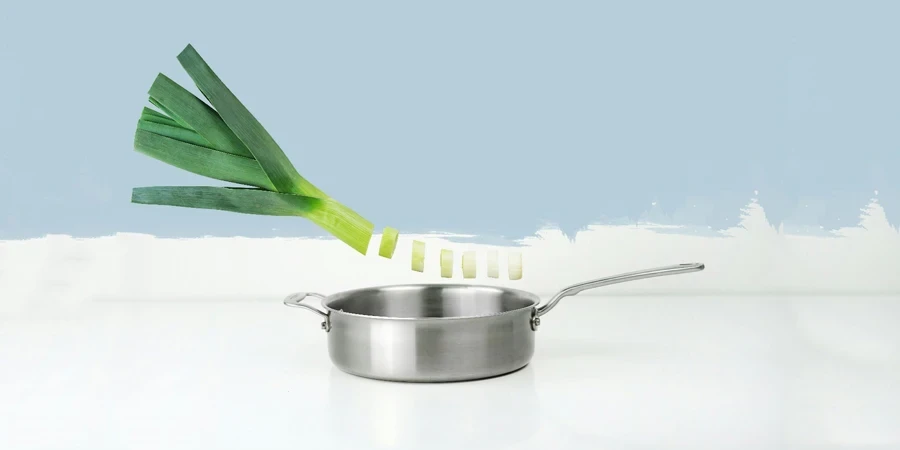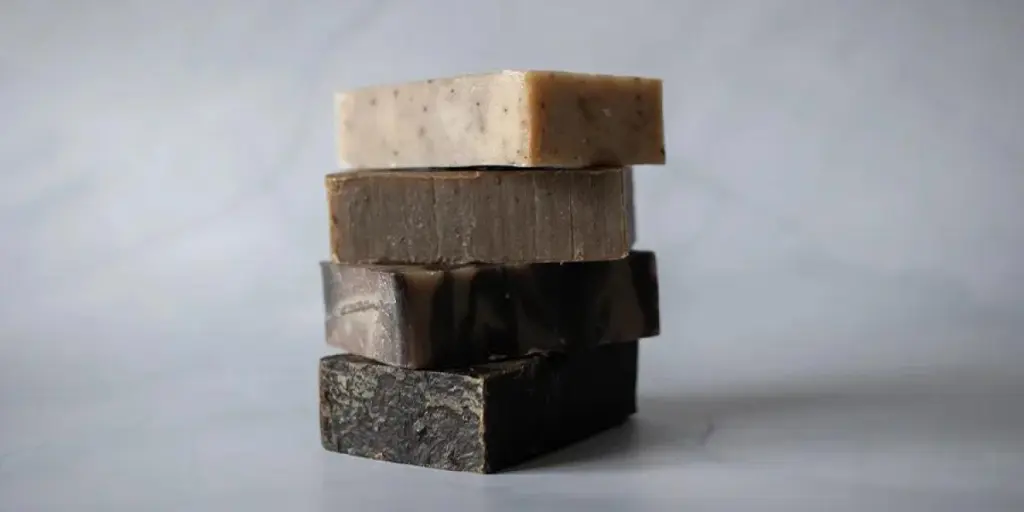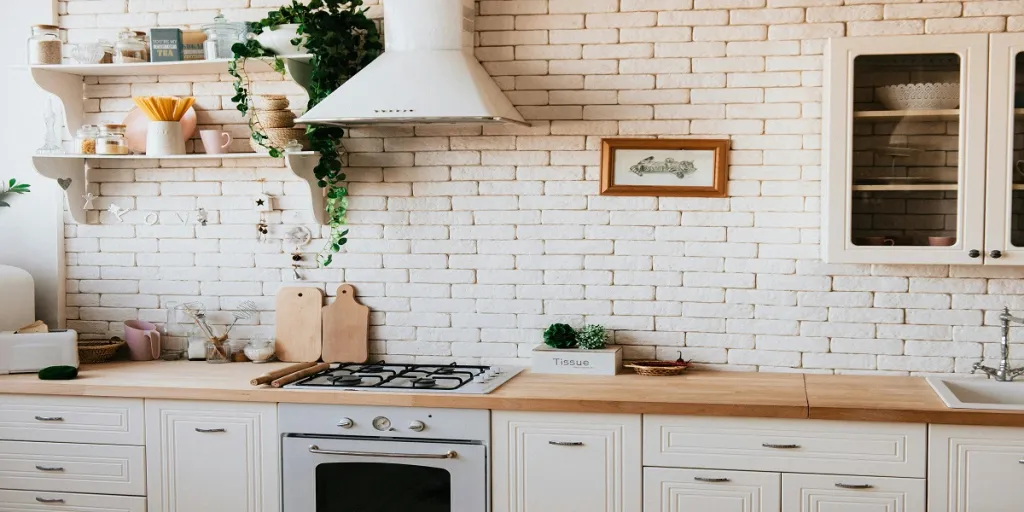A saucepan is a fundamental tool in every kitchen, serving as a versatile vessel for everything from crafting delicate sauces to boiling hearty soups. As the cookware market evolves with emerging trends like eco-friendly materials and multifunctional designs, staying informed is crucial for professionals seeking high-quality, durable products. Understanding the nuances of saucepan types, market dynamics, and key selection criteria can drive smarter purchasing decisions and elevate kitchen efficiency. This article offers a detailed guide to the latest market insights, material options, and expert tips tailored for business buyers in the cookware industry. Dive into the essentials to make choices that align with both functional and professional needs.
Table of Contents
● Market overview: saucepans in the global cookware market
● Types of saucepans and what makes them shine
● How to select the best saucepan for your kitchen
● Conclusion
Market overview: saucepans in the global cookware market

Sizing up the global cookware market
The global cookware market is a rapidly growing sector, valued at $14.65 billion in 2023, with projections to reach $23.84 billion by 2030, growing at a CAGR of 7.2%, according to Maximize Market Research. Key drivers include the rising demand for modular kitchens and an increasing focus on quality cookware driven by consumer awareness. The pots and pans segment dominates, accounting for 62.81% of the market share in 2023, due to their multipurpose applications and preference for durable materials like stainless steel and ceramic.
Trends shaping consumer demand
The market reflects a strong shift towards eco-friendly and sustainable cookware, such as stainless steel and anodized aluminum products, as consumers prioritize health and environmental concerns. Multifunctional designs, such as cookware with strainer lids or pour spouts, are gaining traction for their versatility. Rising disposable incomes and home cooking trends, amplified by the popularity of food shows and social media, have further spurred the demand for premium cookware.
Regional highlights and growth dynamics
Asia-Pacific leads the market with a 43.1% share in 2023, driven by rapid urbanization and a surge in residential construction, especially in India and China. In India, government initiatives like free LPG connections under the Pradhan Mantri Ujjwala Yojana have bolstered demand for cookware. Meanwhile, North America is set to grow at a CAGR of 5.6%, fueled by increased household spending on premium cookware for kitchen upgrades. These regional dynamics underline the expanding opportunities for cookware manufacturers worldwide.
Types of saucepans and what makes them shine
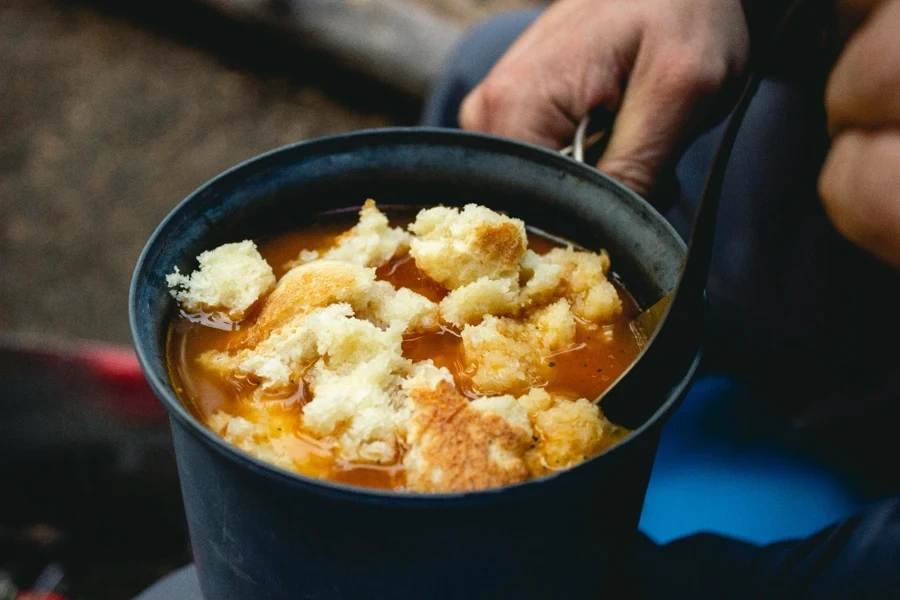
Nonstick saucepans
Nonstick saucepans are constructed with a surface coated in polytetrafluoroethylene (PTFE) or ceramic-based materials, designed to prevent food from adhering during cooking. High-quality nonstick coatings are rated to withstand temperatures up to 500°F, though prolonged exposure to higher heat can degrade the coating. Many feature a hard-anodized aluminum base for optimal heat conduction, ensuring even cooking across the surface. These pans are often lightweight, with handles designed to resist heat transfer, making them ergonomic for frequent use.
Stainless steel saucepans
Stainless steel saucepans often incorporate 18/10 stainless steel, signifying 18% chromium and 10% nickel, ensuring corrosion resistance and a polished finish. Advanced models feature tri-ply or multi-ply construction, combining an inner aluminum or copper core sandwiched between layers of stainless steel. This design improves heat distribution while retaining the durability of stainless steel. Typically, the walls of these saucepans range between 2.5 mm and 3 mm in thickness, offering both sturdiness and optimal thermal performance. They are also compatible with induction cooktops due to their magnetic properties.
Copper saucepans
Copper saucepans provide thermal conductivity of approximately 390 W/m·K, nearly ten times higher than stainless steel, ensuring rapid and even heat distribution. The inner lining, often stainless steel or tin, prevents chemical reactions with acidic foods while maintaining a smooth cooking surface. Premium copper pans feature a thickness of 2.5 mm to 3 mm, striking a balance between heat responsiveness and durability. They often include riveted brass or stainless-steel handles to maintain the aesthetic appeal while ensuring sturdiness.
Cast iron saucepans
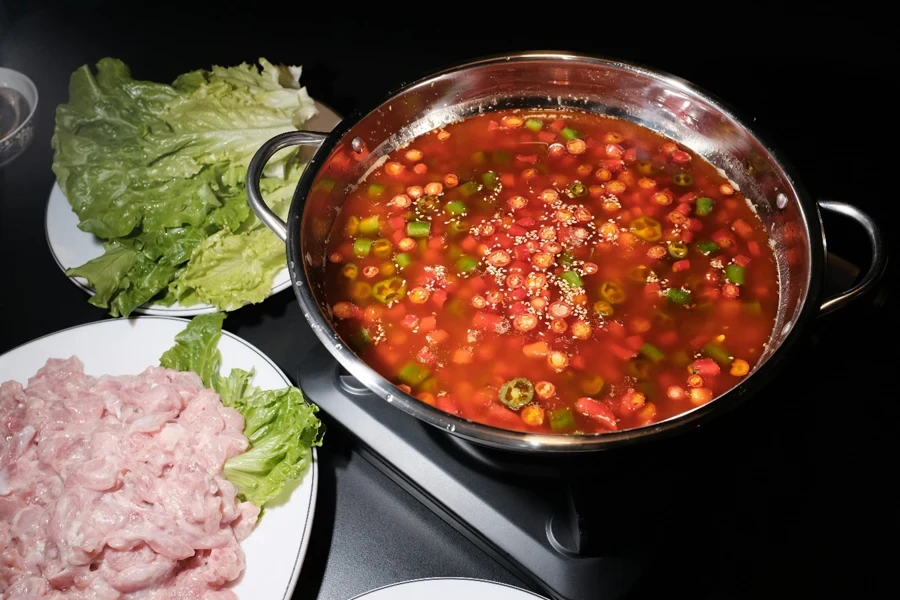
Cast iron saucepans typically weigh 3–6 lbs, with walls and bases ranging between 3.5 mm and 5 mm in thickness, offering superior heat retention. Enameled varieties provide a non-reactive surface, eliminating the need for seasoning and making them suitable for acidic recipes. Uncoated cast iron develops a natural nonstick surface through seasoning with polymerized oils, enhancing its cooking properties over time. These saucepans can handle temperatures exceeding 700°F, making them suitable for stovetop-to-oven transitions.
Induction-ready saucepans
Induction-ready saucepans incorporate ferromagnetic materials in their base, such as layers of stainless steel or iron. Multi-layer bases, often up to 5-ply, improve heat conductivity and prevent warping under high heat. These pans frequently include thermal heat indicators for precision cooking and are designed to minimize electromagnetic resistance, allowing efficient energy transfer. They perform optimally on cooktops with power outputs between 1200 and 1800 watts, delivering consistent results even under high-powered induction stoves.
Glass saucepans
Glass saucepans are made from borosilicate glass, which offers thermal shock resistance and a temperature tolerance range from -40°F to 500°F. The transparency allows for easy monitoring of contents, though the material has low thermal conductivity (around 1.1 W/m·K), often requiring more extended cooking times. Glass handles are generally integrated into the design, eliminating the need for rivets but requiring careful handling to avoid chipping or cracks.
How to select the best saucepan for your kitchen
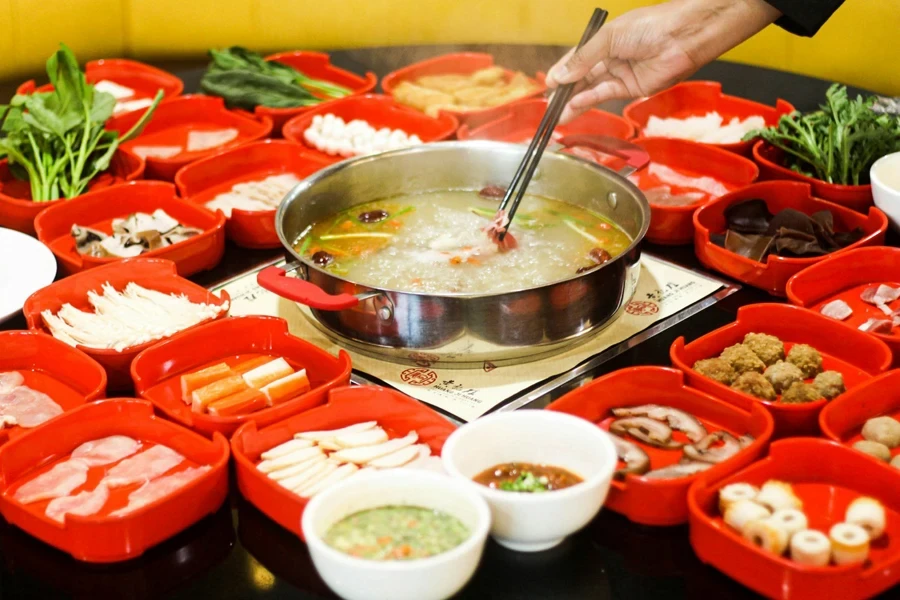
Material matters
The choice of material directly impacts the performance, maintenance, and lifespan of a saucepan. Stainless steel is widely favored for its durability, corrosion resistance, and non-reactive properties, making it suitable for a variety of dishes, including acidic recipes. Aluminum, especially when anodized, offers excellent heat conduction with a thermal conductivity of approximately 205 W/m·K, making it lightweight and ideal for quick, even heating. Copper, with a conductivity of about 390 W/m·K, is unmatched for precision cooking but requires careful maintenance to prevent discoloration and ensure food safety. Each material caters to different cooking styles and demands, so understanding their thermal properties and care requirements is crucial.
Sizing and capacity
The size and capacity of a saucepan should align with the intended cooking needs. For smaller tasks like heating sauces or melting butter, a 1–2 quart pan is sufficient. Larger tasks, such as preparing soups or pasta sauces, benefit from 3–4 quart pans, which provide enough volume for family-sized portions. When selecting a size, consider the saucepan’s height-to-width ratio; a broader base enhances heat distribution for even cooking, while taller sides help retain moisture during simmering.
Heat compatibility
Ensuring compatibility with stovetop types is essential for optimal performance. Induction cooktops require saucepans with ferromagnetic bases, often indicated by multi-layered constructions with embedded steel or iron. Gas stoves accommodate a wide range of materials but benefit most from pans with evenly distributed weight to avoid tipping. Ceramic and electric stovetops work best with flat-bottomed pans to maintain full contact and uniform heating. Always check the manufacturer’s specifications to confirm compatibility with your stove.
Eco-friendly choices
Eco-conscious buyers increasingly prioritize cookware made from sustainable and recyclable materials. Anodized aluminum, for example, is chemically stable and less prone to leaching, extending its usability without compromising safety. Stainless steel is another environmentally friendly option, as it is 100% recyclable and requires minimal maintenance, reducing the need for replacements. These materials also align with consumer preferences for cookware free from harmful coatings like PTFE or PFOA, ensuring both health and environmental safety.
Practical features
Key design features elevate a saucepan’s functionality and ease of use. Lids, especially those with snug fits, improve heat retention and moisture control, critical for simmering and steaming. Ergonomic handles made from heat-resistant materials such as phenolic resin or silicone ensure safe handling even during prolonged use. Multi-ply bases, typically 3–5 layers, enhance durability and even heat distribution, reducing the risk of warping over time. Features like pour spouts and strainer lids add convenience, streamlining cooking processes without the need for additional tools.
Longevity vs. price
Investing in high-quality saucepans offers long-term value by minimizing replacements and enhancing cooking performance. While premium materials like copper or tri-ply stainless steel may involve a higher initial cost, their durability and efficiency often offset the expense over time. Lower-cost alternatives may suffice for infrequent use but are more prone to warping, scratching, or degrading with regular use. A well-chosen saucepan balances cost, material quality, and feature set to ensure reliability for years to come.
Conclusion

Selecting the right saucepan involves balancing material properties, functionality, and cost to suit diverse cooking needs. From durable stainless steel and eco-friendly anodized aluminum to precision-focused copper, each option offers unique benefits tailored to specific culinary styles. Considering size, compatibility with stovetops, and practical features ensures maximum efficiency and longevity. For businesses, prioritizing quality and sustainability in product choices not only meets consumer demand but also supports long-term value. Thoughtful decisions in cookware selection contribute to both superior performance and customer satisfaction.
